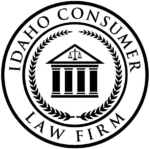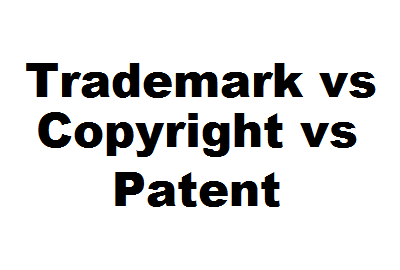Overview
As a business owner, you create things. You might create products or services and sell them. Maybe you create a unique brand or name to identify your business. Or, you might write an ebook, take a photograph, or create some artwork. In either of these scenarios, the law has mechanisms to protect these creations. These mechanisms are called intellectual property rights.
The trick is that you need to understand what intellectual property law applies to your creation. Here’s a basic chart to help you do just that!
| Type of creation | Law you’ll use |
| A book, manual, photo, video, sound, recording, blog article, etc. | Copyright |
| Your branding, logo, or business name | Trademark |
| An original product or system you invented | Patent |
You’ve identified the law, now what does it mean?!
I’ll cover each.
- Copyrights
A “copyright” gives you the exclusive right to your works of authorship. This is actually a Constitutional right. To be granted this right, all you have to do, technically, is create a work in some tangible form. That’s it.
However, federal copyright law formalizes these rights and gives them some teeth. You can register your copyright with the U.S. Copyright Office to get these extra protections. These protections basically mean you are given some advantages in the event you have to enforce your right in court. For example, it says you can make an infringing party reimburse your attorney’s fees.
- Trademark
A “Trademark” is a mark that identifies and distinguishes your stuff from other people’s stuff. Such a mark may be your name or a logo. It can also be other things like a color, sound, or even smell. If it’s something you use to identify your goods or services in commerce, you’re in the trademark space.
Similar to copyrights, you get the legal right to a mark just by using it (well, by being the first to use it). This is called a common law right. But you can also register it your trademark with the federal government. As with copyrights, registering a trademark gives you some advantages to just relying on common law rights.
Registration is done through the United States Patent and Trademark Office. If your trademark is not registered and you want people to know you are claiming a common law right, use “TM” for the symbol. For example, if I want to trademark to perfume scent “That’s a Bit Too Strong,” but I do not have a registered trademark, I would use That’s a Bit Too StrongTM. However, if I did register that trademark, I would use the ® symbol, so it would be That’s a Bit Too Strong®.
- Patents
A patent right means that you have the exclusive right to make, use, or sell your invention. You actually have to apply for this right. It is not found in the Constitution or in common law. Obtaining a patent right is, in my opinion, the most complicated and technical of these three intellectual property rights. In fact, lawyers who help people obtain patent rights must sit for a special examination and need to have education in certain scientific fields of study. So, if you want to get a patent, you need to be prepared to take on the technical issues on your own or hire a patent attorney/agent to help you.
A patent is processed through the United States Patent and Trademark Office.
Who’s Policing All This?
There are no intellectual property police. No one is actively making sure that your intellectual property rights are being enforced. It’s up to you.
And here’s the catch. In some cases, if you don’t enforce your rights, you lose them.
To enforce your rights, you can use the power of the courts. This is done through an attorney. First, the attorney will typically ask the person who is infringing on your rights to stop. If this person doesn’t stop, or if you can’t settle this issue, the attorney can file a complaint with the appropriate court. Then the court will enforce the rights consistent with the law.
Another option is to work with private parties. For example, a buddy of mine owns a company called Find Fakes. Find Fakes helps shut down people who are selling knock off products (ie: violating trademarks) online. He does this by convincing ISPs or shopping side (like Amazon or Ebay) to take down infringing sites, storefronts, or listings.
What’s next?
If you think you are ready to register and protect your intellectual property rights, I’m going to show you how to do that in an upcoming article. Well, only for copyrights and trademarks—I don’t do patents. If you don’t want to wait, hit me up for a free consultation.

